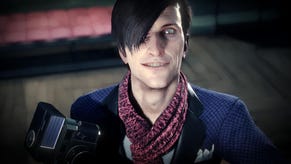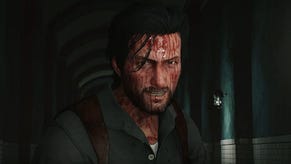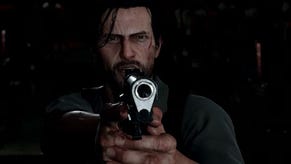The Evil Within PS4 Review: Trapped in the Past, With an Eye Towards the Future
Shinji Mikami returns to survival horror. What has the genre's creator learned in the years since Resident Evil 4?
This article first appeared on USgamer, a partner publication of VG247. Some content, such as this article, has been migrated to VG247 for posterity after USgamer's closure - but it has not been edited or further vetted by the VG247 team.
The Evil Within was a pretty easy sell for me. Shinji Mikami returns to the genre that he created with Resident Evil and later improved in Resident Evil 4. With his team at Tango Gameworks, Mikami has the ability to create games without the management at Capcom breathing down his neck, meaning The Evil Within is closer to his own personal vision. Unfettered Mikami sounded like a dream.
So is The Evil Within a crowning masterpiece in the survival horror genre? Not really. The Evil Within is a uneven experience, and in its quest to make the ultimate survival horror game, Tango Gameworks bounces all over the map when it comes to good and bad execution.
From a visual standpoint, the game's presentation is top-notch. Yes, the game struggles with 30 fps during heavy combat and thanks to the ever-present black letterbox bars it runs at a very odd resolution (1920x768 on PlayStation 4 and 1600x640 on Xbox One), but what the game has on display genuinely looks good. The game's fifteen chapters will take you to a variety of locations: Worn-out mental hospitals, ancient stone churches, burning boiler rooms, sleepy villages, and more. Yes, occasionally it feels like Mikami is revisiting Resident Evil and Resident Evil 4 locations for nostalgia's sake, but the level design is superb, so I can forgive this indulgence.
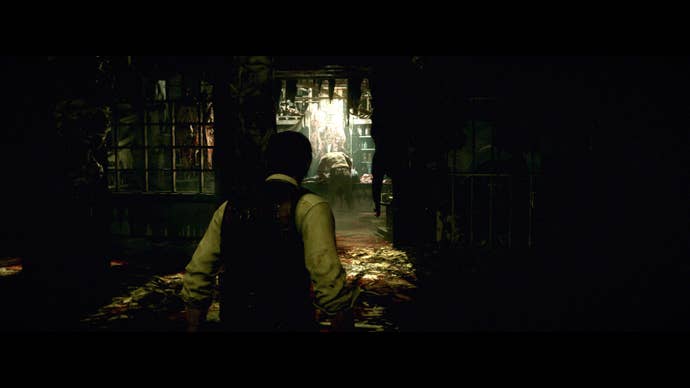
The game makes heavy use of light and shadow, and the id Tech 5 engine does a great job of rendering it. The protagonist, Detective Sebastian Castellanos, is equipped with a lantern early on and many of the scenes that have a strong sense of tension require the use or restraint of the lantern. In the darkness hides some well-designed creatures, especially once you get beyond the rank-and-file stumbling undead. Is it scary? Not so much, as the game feels largely like a checklist of all the scary horror movie and game tropes you've seen before.
Unfortunately, while the visual presentation feels like Resident Evil 4 with the graphical power we currently have available, the narrative feels like the first few Resident Evil games transplanted directly into the 21st century. The dialog is completely wooden and the characters are mostly bland ciphers. The story drops the cast into the middle of a situation and resolving that situation says precious little about that cast; you just fix things as much as possible and the game ends. The Evil Within is not a game you play for its gripping narrative and I was vaguely disappointed in lack of expertise in that regard.
Part of the game plays like Resident Evil 4, opting for the same over-the-shoulder camera but adding in the ability to move and aim at the same time (praise be to Mikami!). That latter addition is helpful, because The Evil Within is a big fan of trapping you in areas with hordes of undead or bosses that require either a ton of damage or specific actions to kill. You'll be doing a lot of running, turning, and shooting.
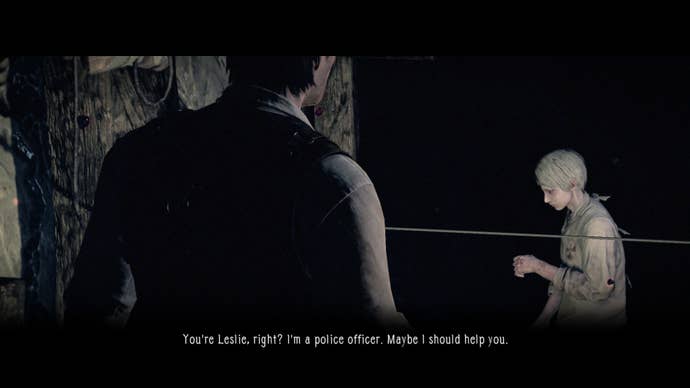
I said "part" in the previous paragraph because The Evil Within is not just third-person shooter, it also has a heavy stealth action component. In certain chapters and areas, Sebastian has to creep behind cover, hide under beds and in lockers, or stealth kill just to survive. The problem is that The Evil Within's stealth mechanics aren't as robust as Outlast, The Last of Us, or non-horror titles like Splinter Cell: Blacklist. Certain mechanics are missing, while others occasionally decide to not work. There's no peeking out behind corners and Sebastian has no way to open a door for stealth; if you attempt to open a door from a stealth position, he promptly stands up and saunters through the door like impending death isn't waiting for him.
There's a Eye icon to let you know when enemies can see you, but certain foes will see you regardless of what that icon says. This would all be fine if stealth was an afterthought, but it's a major part of getting through the game while preserving ammo. Sebastian also has a knife that's available during his one-hit stealth kills, but the knife isn't available anywhere else; instead he uses his wholly ineffective fists for melee attacks. No precision knife slashes here.
Expect to die a lot in The Evil Within and expect that most of those deaths will be because of one-hit kills. Most bosses kill you instantly if they catch you and The Evil Within sticks to the "figure it out" school of design. How do you kill this boss? Does it require a ton of damage or a specific method? Are you even supposed to kill this boss instead of running? What's the specific method to kill this boss? The game won't give you hints for many of these answers, meaning you'll do something wrong - wasting ammo on a boss when you're supposed to be running or missing a key lever or switch - die, and then wait 10 to 15 seconds to try again. At times, The Evil Within was probably the most frustrating game I've played this year. Success in certain encounters isn't met with a thrill, it's met with exasperation: "That's what I supposed to do?"
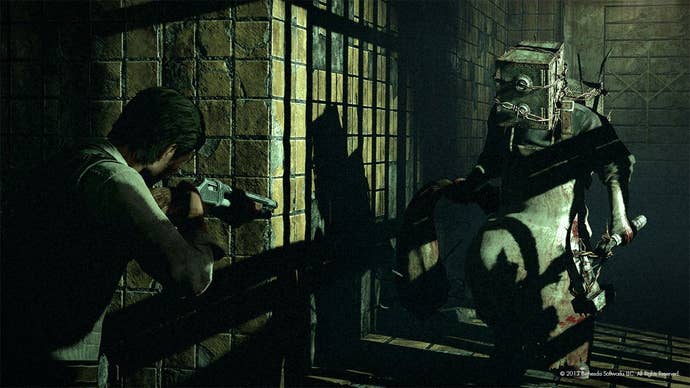
The Evil Within also has an issues with its over-the-shoulder camera. When you're in stealth or aiming modes, the camera pulls in close, shrinking your field-of-vision. The means you have less information when you need it most. In stealth, the poor camera compounds the issue of having weaker stealth mechanics. In combat, the smaller FOV means using certain weapons, like the absolutely-necessary Agony Crossbow, feels cumbersome.
You can help some of these problems by upgrading Sebastian. You'll find green goo on corpses and around the environment. You can use this goo to upgrade Sebastian's abilities and weapons, making his weapons do more damage, critical hit more often, or hold more ammunition. Certain upgrades are completely necessary, like improving Sebastian's ability to sprint. See, he can only sprint for a limited amount of time and if you go over that time, Sebastian just stops running. He doesn't slow down, he completely stops to take a breath, his tiny lungs gasping for oxygen. It's probably one of the more perplexing design decisions, given how important sprinting is. Overall, the upgrade system is decent, but you'll never feel like you're an overpowered monster. Sebastian gets better, but you'll still die a lot.
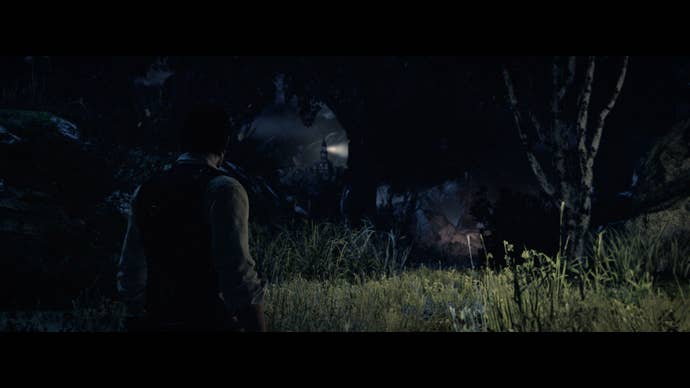
It's a shame that there are all these niggling issues in The Evil Within, because when it's on point, it's really good. Certain chapters and scenes far outclass the rest of the game. Mikami isn't one to stick to a single idea; The Evil Within's heavy mental component means he can take players to a wide variety of interesting places. It's a mental theme park and Shinji Mikami is the conductor. Unfortunately, lack of consistency remains a problem.
The Evil Within isn't bad, but the aforementioned problems prevent it from being great. At the very least, it's a good start for something better (the ending leaves things wide open for further sequels). With some cuts, some mechanical improvements, and a bit more focus, I think The Evil Within 2 could be a wonderful return for survival horror. For now, if you're desperately looking for something in the genre, are willing to overlook some gameplay problems, and aren't expecting a deep, well-told story, The Evil Within is a good time.
VisualsThe Evil Within looks great, with some awesome level and monster design, and a superb lighting engine. The black letterbox bars are annoying, but you'll get used to them.
SoundSound is important for building tension and The Evil Within's sound design is good.
InterfaceIt does its job. Good job, interface.
Lasting AppealOnce you're done, there's not much reason to return to The Evil Within except for the higher difficulty levels.
ConclusionThe Evil Within is Shinji Mikami's return to the survival horror genre, but that return is muted. Overall, the Evil Within is solid and it definitely has some great moments, but poorly-implemented mechanics and a bland story bring down the overall package. Survival horror fans should pick it up, but others may want to wait until the price drops a bit.






